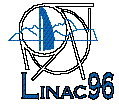Design Issues for High-Intensity, High-Energy Proton Accelerators
Y. Yamazaki
KEK, Tsukuba, Japan
Abstract
The high-intensity (typically more than 0.1 mA), high-energy (more than 1 GeV, but less than several 10 GeV) proton beams have been required by various science and industrial fields, including the pulsed spallation neutron experiments, the nuclear physics experiments, the nuclear waste transmutation and so forth. We have various possible accelerator schemes for these purposes. The advantages and disadvantages of parameter choices will be summarized, by emphasizing the importance of understanding the halo-formation mechanisms in order to settle the controversial issues. The beam current to be accelerated is actually limited by the amount of beam loss, which is critically dependent upon the amount of the beam halo both longitudinal and transverse. The optimum design is also dependent upon the future performances of the key components such as high-intensity, low-emittance ion sources. Thus, we should concentrate our efforts on the development of these components in order to realize these machines. Some examples of the efforts in this direction will be presented.
Announcements |
Committees |
Exhibition |
General |
Hotels |
Index |
Linacs |
Social |
Welcome |
sln 14 March 1996
 Conference
Conference Conference
Conference